§1. Short description Silver 2.x belongs to SCADA-systems class according to its characteristics. One of the leading features of SCADA-systems is an opportunity of developing data collection systems and control systems in the visual designing mode allowing to avoid laborious programming on each stage of an application system development. §2. Objective Silver 2.x represents an integrated instrumental system providing a full cycle of creating distributed systems of data collection and control in the visual designing mode allowing to avoid laborious programming on each stage of an application system development – beginning from informational channels description and finishing with graphs and reporting forms creating.
Consistent realization of SoftPLC conception in Silver 2.x based on open architectural decisions adds to management-information systems being developed extra functionality and flexibility.
Technological programming language of a IEC 1131-3 standard usage allows facilitate a task of management systems creation to the maximum for people which don’t deal with programming professionally (like technologists, system integrators). §3. A short history of creation A story of a Silver package development and application by RTS-Ukraine company has been dating more than 8 years. Geography of application stretches from the western board of Ukraine to the east of Russia.
The first version Silver 0.1 was created for internal use of the company RTS-Ukraine only for the purpose of automation systems development for different objects and it wasn’t positioned as a commercial one.
At the very beginning the package was developed for RTOS QN X, version 4.25. The first application of the system having been developed with a help of Silver 1.0 took place on theZaporozhskiy ferroalloy plant, in 1998, where the control system for the furnaces №35, №36, №38 was created on the base of Silver 1.0 and QNX 4.25.
Silver developed actively as well as QNX: with QNX (version 6.0) release a new package Silver 2 appeared which was absolutely new and improved with a help of new technologies. At the same time the system integration department of the company used this package actively for control systems implementation on the different enterprises and different branches of industry beginning from food and metallurgical industries and finishing with space industry. There are systems where the quantity of physical links 'input/output' being processed by a decentralized system on QNX\Silver base reaches around 1000 and the quantity of symbolic circuits numbers 100. §4. Architecture and basic options Silver package includes a development environment and an implementation environment. The development environment represents an aggregate of mutually bound configurators allowing to create a complete project in virtual programming mode.
The implementation environment includes all necessary device drivers and different services supposed for collection, keeping and reflection of data, control and diagnostics. The implementation environment Silver represents a distributed system of data collection and the processes of the system may appear on different computers under RTOS QNX control being united into a single net.
The central notion is a notion of a variable. A variable (or a tag) Silver is an object applying an access interface. Each Silver tag may be connected with a data source. As a data source any volunteer process may act. Usually a data source for a tag is a device driver. The tags may have processes which can be implemented on different machines united in a net as data sources.
Nevertheless all the tags described in this project are reflected on the single variable field thus the problems of the access to these data of users applications are minimal. Thus any process (symbolic circuits reflection, keeping in database, control) made by any machine in the net always may acquire a clear access to variable value.
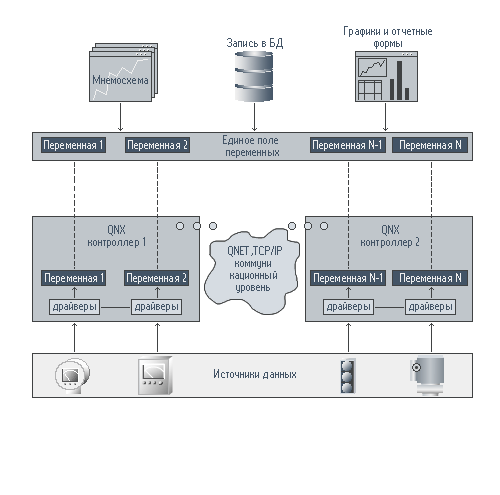 | Рисунок 1.
Архитектура пакета Silver |
§5. Main components (processes) of Silver
- control in technological languages — an integration with a special purpose ISaGRAF allows to apply control algorithms using technological languages of control of IEC 1131-3 standard.
 | Рисунок 2.
Технологические языки управления |
- HMI (a human-machine interface) turns a technological controller into a full-functioning operator`s workplace giving a possibility of a categorical access to information in the form of animated multimedia symbolic circuits, trends, tables. Also there is a possibility to form voice-message reports.
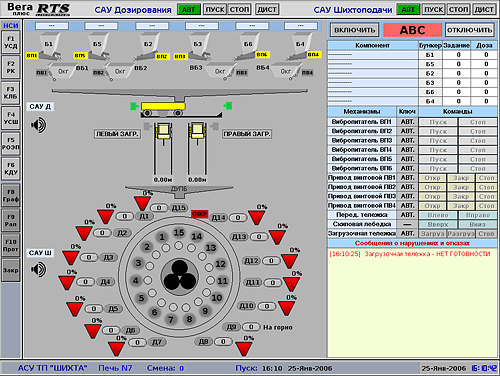 | Рисунок 3.
АСУ ТП «Шихта» |
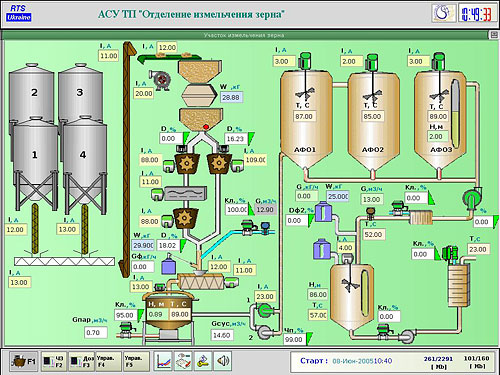 | Рисунок 4.
АСУ ТП «Отделение измельчения зерна» |
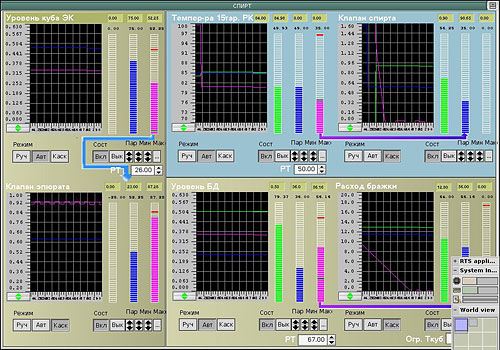 | Рисунок 5.
АСУ ТП производства спирта для ГП «Козловский спиртзавод» |
- For creation of symbolic circuits a special builder was developed which allows to arrange visual components on the form and set certain activities by a single dragging of a mouse.
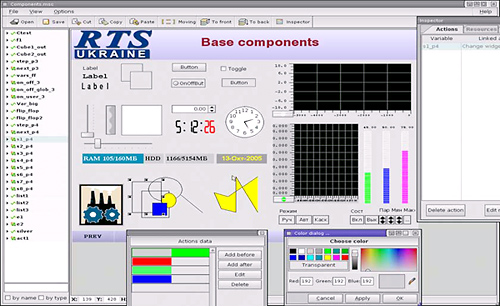 | Рисунок 6.
Специальный построитель мнемосхем |
- Keeping information in the database allows to record the data acquired to any database being maintained. For rapidly changing parameters a specialized highly optimized database has been created.
- The server of constants — allows to set significance in the form of constants (being kept between the system working periods) and implement a restriction to access for them for the technical personnel being responsible for the operation with the system).
- Fulfilment of the functions written in C\C++ — a possibility of the fulfilment of different functions using C\C++ exists, which gives an opportunity to use many possibilities of the operational system directly.
- Graphs review — allows to review and outtype archive data (historical trends) in the graphical view.
 | Рисунок 7.
Окно просмотрщика графиков |
- Generations of reports — allows to form, review and print optional report forms.
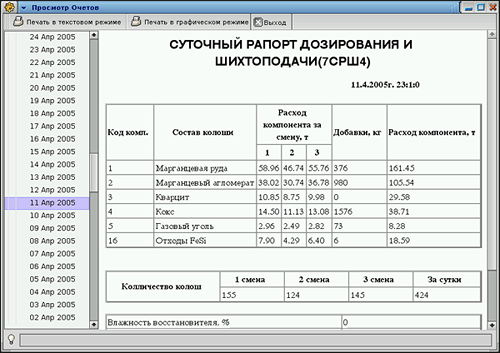 | Рисунок 8.
Окно просмотрщика отчетных форм с открытым отчетом |
- A log server — serves to register any events in the system such as variable value changes, value overrunning, operator`s changes of the system parameters.
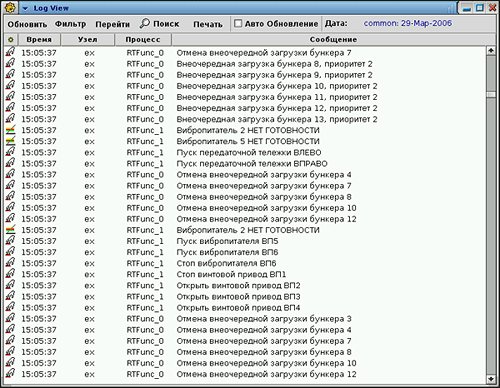 | Рисунок 9.
Окно просмотрщика лог-файлов запущенных проектов |
- Drivers of different devices..
- Drivers emulations — any process being a source of data for Silver tags may be launched in emulation regime on the stage of the system debugging. This enables to trace the system behaviour in different situations.
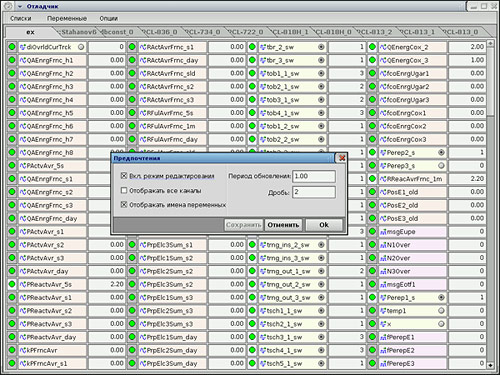 | Рисунок 10.
Окно отладчика |
§6. Short characteristics of the implementation environment
- There are no restrictions on:
- Tags quantity
- Entry\exit device (data source)
- Entry\exit channels (the quantity of channels in one data source)
- Symbolic circuits
- SQL database (MySQL, PostgreSQL, Empress) support.
- The average term of tags access is 150 microseconds (for 500 channels on P400\64RAM)
- The average term of channels access (for 500 channels on P400\64RAM)
- Symbolic circuits update period is 100 microseconds.
§7. Application on Silver base
§8. Program interface drawings 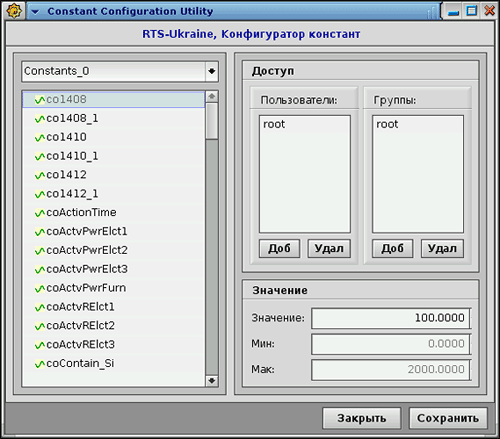 | Рисунок 11.
Внешний вид конфигуратора констант |
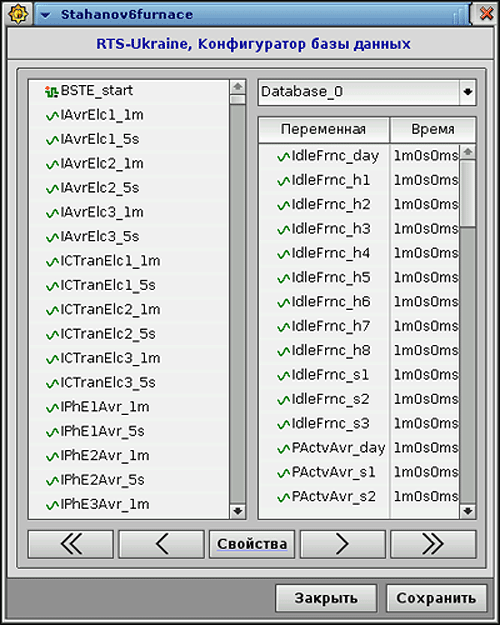 | Рисунок 12.
Конфигуратор базы данных |
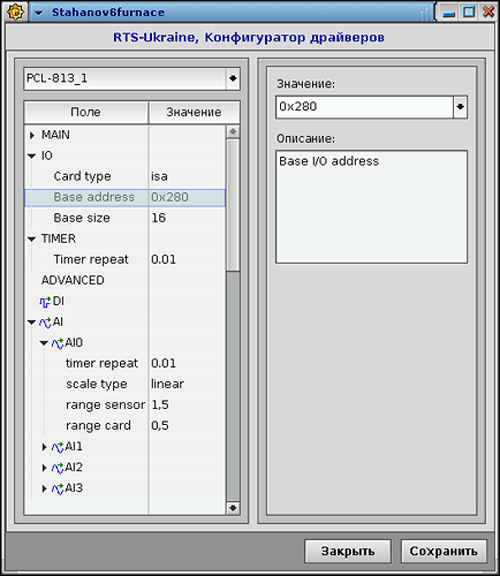 | Рисунок 13.
Окно конфигуратора драйверов, используемых в проекте |
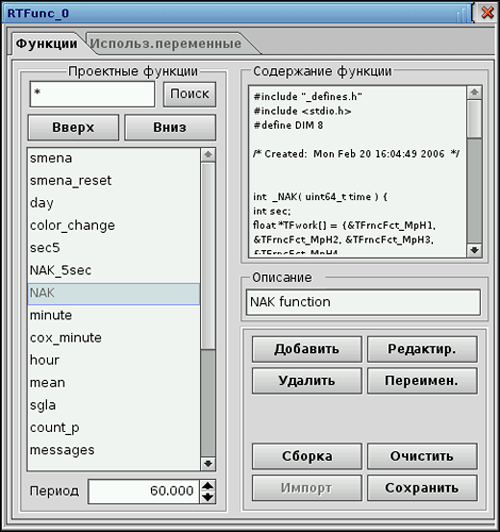 | Рисунок 14.
Конфигуратор функций на языке С/С++ |
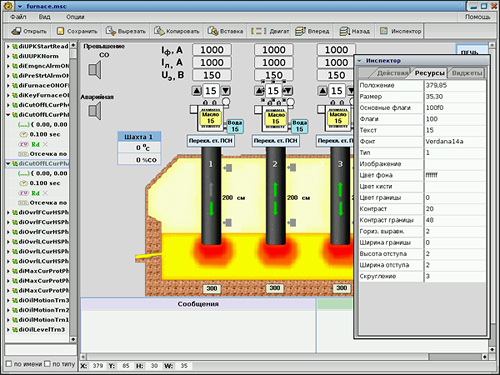 | Рисунок 15.
Построитель мнемосхем с редактируемой мнемосхемой |
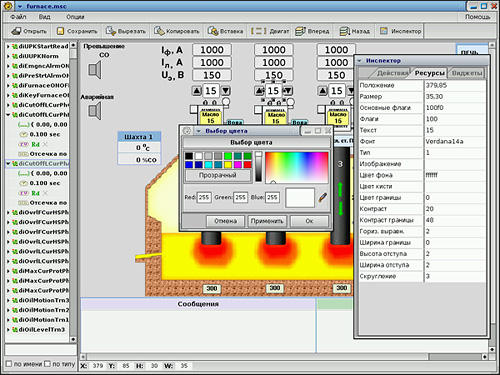 | Рисунок 16.
Построитель мнемосхем с открытыми диалогами редакторов ресурсов |
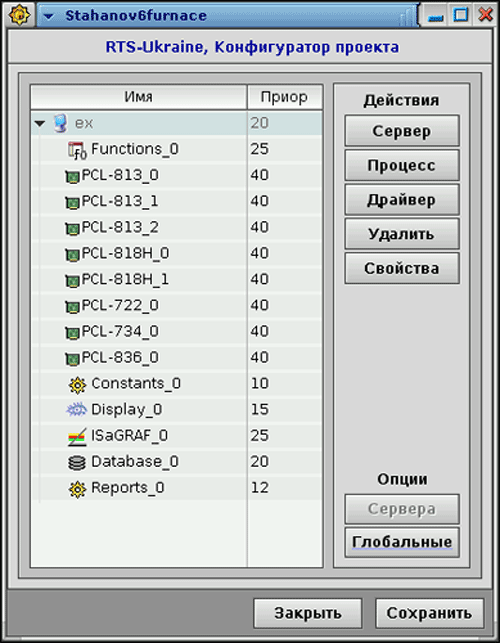 | Рисунок 17.
Окно конфигурации всего проекта со списком процессов и драйверов |
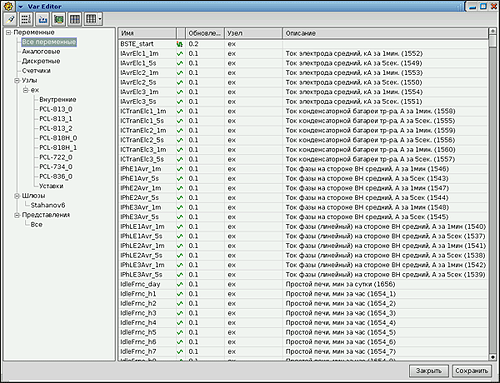 | Рисунок 18.
Окно редактора переменных проекта |
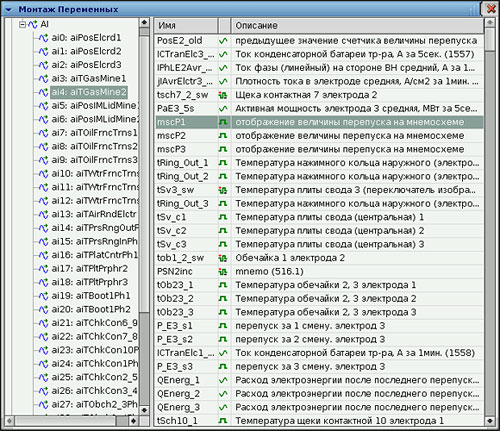 | Рисунок 19.
Окно мастера привязок переменных к каналам плат УСО |
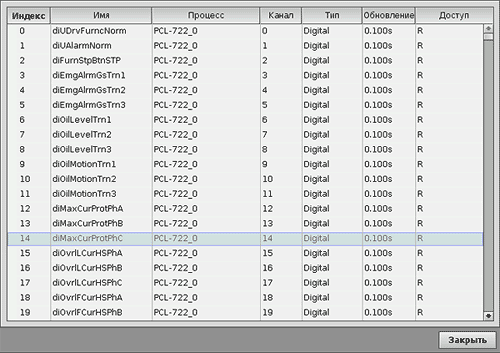 | Рисунок 20.
Информационное окно содержащее полный список всех переменных проекта |
| 
